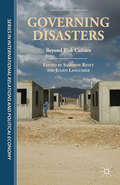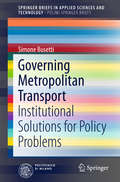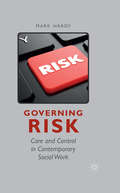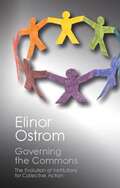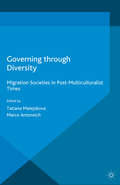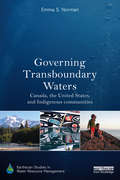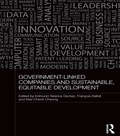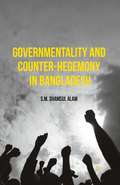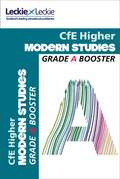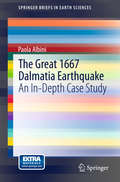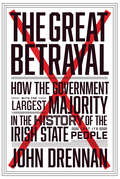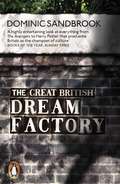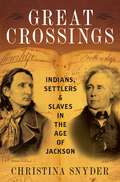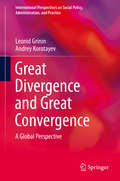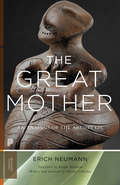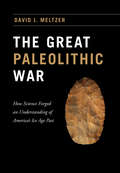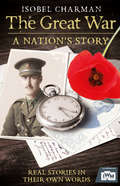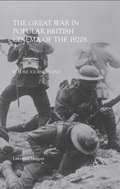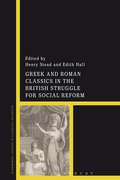- Table View
- List View
Governing Disasters: Beyond Risk Culture (The Sciences Po Series in International Relations and Political Economy)
by Sandrine Revet Julien LangumierBased on extensive ethnographic and historical research conducted in diverse field locations, this volume offers an acute analysis of how actors at local, national, and international levels govern disasters; it examines the political issues at stake that often go unaddressed and demonstrates that victims of disaster do not remain passive.
Governing Metropolitan Transport: Institutional Solutions for Policy Problems (SpringerBriefs in Applied Sciences and Technology)
by Simone BusettiThis book investigates the link between institutions and public policies with specific reference to transport. It opens by examining the main arguments for the establishment of metropolitan transport authorities. The potential impacts of institutional change on the policy efficiency of institutions are then examined. Key problems for institutional designers are identified, showing how they can hamper the achievement of desired policy outcomes through institutional solutions. Two in-depth case studies on institutional change in metropolitan transport (in London and Barcelona) are presented with a view to testing the aforementioned hypotheses and providing insights into the ways in which the two transport institutions were reformed. The concluding chapter identifies lessons for institutional designers and highlights the policy results that may be expected from the constitution of metropolitan transport authorities.
Governing Risk: Care and Control in Contemporary Social Work
by M. HardyDrawing on Foucault's later work on governmentality, this book traces the effects of 'the rise of risk' on contemporary social work practice. Focusing on two 'domains' of practice – mental health social work and probation work – it analyses the ways in which risk thinking has affected social work's aims and objectives, methods and approaches.
Governing the Commons: The Evolution of Institutions for Collective Action (PDF) (Canto Classics)
by Elinor OstromThe governance of natural resources used by many individuals in common is an issue of increasing concern to policy analysts. Both state control and privatization of resources have been advocated, but neither the state nor the market have been uniformly successful in solving common pool resource problems. After critiquing the foundations of policy analysis as applied to natural resources, Elinor Ostrom here provides a unique body of empirical data to explore conditions under which common pool resource problems have been satisfactorily or unsatisfactorily solved. Dr Ostrom uses institutional analysis to explore different ways - both successful and unsuccessful - of governing the commons. In contrast to the proposition of the 'tragedy of the commons' argument, common pool problems sometimes are solved by voluntary organizations rather than by a coercive state. Among the cases considered are communal tenure in meadows and forests, irrigation communities and other water rights, and fisheries.
Governing through Diversity: Migration Societies in Post-Multiculturalist Times (Global Diversities)
by Marco Antonsich Tatiana MatejskovaThis cross-disciplinary edited collection presents an integrated approach to critical diversity studies by gathering original scholarly research on ideational, technical and actual social dimensions of contemporary governance through diversity.
Governing Transboundary Waters: Canada, the United States, and Indigenous Communities (Earthscan Studies in Water Resource Management)
by Emma S. NormanWinner of the Political Geography Specialty Group's 2015 Julian Minghi Distinguished Book Award! With almost the entire world’s water basins crossing political borders of some kind, understanding how to cooperate with one’s neighbor is of global relevance. For Indigenous communities, whose traditional homelands may predate and challenge the current borders, and whose relationship to water sources are linked to the protection of traditional lifeways (or ‘ways of life’), transboundary water governance is deeply political. This book explores the nuances of transboundary water governance through an in-depth examination of the Canada-US border, with an emphasis on the leadership of Indigenous actors (First Nations and Native Americans). The inclusion of this "third sovereign" in the discussion of Canada-U.S. relations provides an important avenue to challenge borders as fixed, both in terms of natural resource governance and citizenship, and highlights the role of non-state actors in charting new territory in water governance. The volume widens the conversation to provide a rich analysis of the cultural politics of transboundary water governance. In this context, the book explores the issue of what makes a good up-stream neighbor and analyzes the rescaling of transboundary water governance. Through narrative, the book explores how these governance mechanisms are linked to wider issues of environmental justice, decolonization, and self-determination. To highlight the changing patterns of water governance, it focuses on six case studies that grapple with transboundary water issues at different scales and with different constructions of border politics, from the Pacific coastline to the Great Lakes.
Governing Transboundary Waters: Canada, the United States, and Indigenous Communities (Earthscan Studies in Water Resource Management)
by Emma S. NormanWinner of the Political Geography Specialty Group's 2015 Julian Minghi Distinguished Book Award! With almost the entire world’s water basins crossing political borders of some kind, understanding how to cooperate with one’s neighbor is of global relevance. For Indigenous communities, whose traditional homelands may predate and challenge the current borders, and whose relationship to water sources are linked to the protection of traditional lifeways (or ‘ways of life’), transboundary water governance is deeply political. This book explores the nuances of transboundary water governance through an in-depth examination of the Canada-US border, with an emphasis on the leadership of Indigenous actors (First Nations and Native Americans). The inclusion of this "third sovereign" in the discussion of Canada-U.S. relations provides an important avenue to challenge borders as fixed, both in terms of natural resource governance and citizenship, and highlights the role of non-state actors in charting new territory in water governance. The volume widens the conversation to provide a rich analysis of the cultural politics of transboundary water governance. In this context, the book explores the issue of what makes a good up-stream neighbor and analyzes the rescaling of transboundary water governance. Through narrative, the book explores how these governance mechanisms are linked to wider issues of environmental justice, decolonization, and self-determination. To highlight the changing patterns of water governance, it focuses on six case studies that grapple with transboundary water issues at different scales and with different constructions of border politics, from the Pacific coastline to the Great Lakes.
Government-Linked Companies and Sustainable, Equitable Development (Routledge Malaysian Studies Series)
by Edmund Terence Gomez François Bafoil Kee-Cheok CheongThe debate over how far governments should intervene in economies in order to promote economic growth, a debate which from the 1980s seemed settled in favour of the neo-liberal, non-interventionist consensus, has taken on new vigour since the financial crisis of 2008 and after. Some countries, most of them in industrialised Asia, have survived the crisis, and secured equitable economic growth, by adopting a developmental state model, whereby governments have intervened in their economies, often through explicit support for individual companies. This book explores debates about government intervention, assesses interventionist policies, including industrial and innovation policies, and examines in particular the key institutions which play a crucial role in implementing government policies and in building the bridge between the state and the private sector. The countries covered include China, India, South Korea, Malaysia and Taiwan, together with representative countries from Europe and Latin America.
Government-Linked Companies and Sustainable, Equitable Development (Routledge Malaysian Studies Series)
by Terence Gomez François Bafoil Kee-Cheok CheongThe debate over how far governments should intervene in economies in order to promote economic growth, a debate which from the 1980s seemed settled in favour of the neo-liberal, non-interventionist consensus, has taken on new vigour since the financial crisis of 2008 and after. Some countries, most of them in industrialised Asia, have survived the crisis, and secured equitable economic growth, by adopting a developmental state model, whereby governments have intervened in their economies, often through explicit support for individual companies. This book explores debates about government intervention, assesses interventionist policies, including industrial and innovation policies, and examines in particular the key institutions which play a crucial role in implementing government policies and in building the bridge between the state and the private sector. The countries covered include China, India, South Korea, Malaysia and Taiwan, together with representative countries from Europe and Latin America.
Governmentality and Counter-Hegemony in Bangladesh
by S.M. Shamsul AlamUsing Michel Foucault's idea of governmentality, this book reinterprets various cases of revolt and popular uprisings in Bangladesh. It attempts to synthesize the theories of Foucault's governmentality and Antonio Gramsci's notions of hegemony and counter-hegemony.
Grade A Booster - Cfe Higher Modern Studies (PDF)
by Pamela Farr Leckie and Leckie StaffExam Board: SQA Level: Higher Subject: Modern Studies First Teaching: 2014, First Exam: 2015 This book is the essential guide to exam skills. It includes detailed advice on how to approach and answer the different types of question you will find in the exam and has been written by an experienced teacher and exam expert. Detailed advice on how to approach all the different types of question you will find in the exam will develop your skills and help you to avoid common pitfalls Essential guide to structuring your responses shows you how to formulate and improve your answers Worked examples of weak and strong answers let you see exactly where and how marks are gained and how to get the best result A dedicated chapter on the Assignment ensures that you have a great foundation for your grade before you even enter the exam room
The Great 1667 Dalmatia Earthquake: An In-Depth Case Study (SpringerBriefs in Earth Sciences)
by Paola AlbiniThis book seeks to provide a comprehensive reconstruction of the 1667 Dalmatia earthquake phenomenon on the basis of eyewitness testimony. At the same time, one of the distinctive features of this book is that the earthquake observations are treated and arranged in time and space so as to provide earthquake data on the macroseismic intensity, which might be used in seismic hazard and risk studies.On April 6, 1667 a devastating earthquake struck the southernmost region of Dalmatia (Croatia). Most of the affected area at that time belonged to the independent Republic of Ragusa, the capital of which was the town of Ragusa, today Dubrovnik. The 1667 earthquake left behind a lasting scar on the history and life of the Republic, as it was the catalyst of a serious financial crisis. Both the economic and more general consequences of this earthquake have been discussed in historiographical and seismological essays in late 20th-century works.This book seeks to provide a comprehensive reconstruction of the 1667 Dalmatia earthquake phenomenon on the basis of eyewitness testimony. At the same time, one of the distinctive features of this book is that the earthquake observations are treated and arranged in time and space so as to provide earthquake data on the macroseismic intensity, which might be used in seismic hazard and risk studies.The book is also intended as an extensive case history, which allows the author to include some guidelines on how to approach the study of a past earthquake and proceed to its full seismological interpretation. In this respect, a unique feature of the book is the comprehensive and detailed analysis of the original documentary sources in their proper context, effectively combining the interpretative approaches of history and seismology.
The Great Betrayal: How the Government with the Largest Majority in the History of the Irish State Lost its People
by John DrennanFrom penalty points to water charges, funding cuts to tax hikes, The Great Betrayal is a cutting assessment of the upheavals, egos and scraps that shaped the 31st Dáil by Ireland’s most sagacious political pundit-turned-political operatorAs the curtain falls on this government’s term in office, it has fallen drastically out of favour, something that is hard to believe if we cast our minds back just a few years to 2011, when Fine Gael and Labour rode a wave of populist sentiment all the way to Dáil Eireann. No Irish government has ever enjoyed a larger majority – and none has ever so comprehensively squandered its mandate. How did the Coalition fall so far so fast?Written with the unique insight of one of the most original observers of Irish politics, The Great Betrayal provides an entertaining and enlightening narrative of a government that, in the eyes of many, betrayed the hopes of the Irish electorate for a democratic revolution, almost immediately after being elected with a thumping majority.The Great Betrayal is required reading for anyone wondering how it all went wrong and where we might go from here.
The Great British Dream Factory: The Strange History of Our National Imagination
by Dominic SandbrookSPECTATOR BOOKS OF THE YEAR 2015Britain's empire has gone. Our manufacturing base is a shadow of its former self; the Royal Navy has been reduced to a skeleton. In military, diplomatic and economic terms, we no longer matter as we once did. And yet there is still one area in which we can legitimately claim superpower status: our popular culture. It is extraordinary to think that one British writer, J. K. Rowling, has sold more than 400 million books; that Doctor Who is watched in almost every developed country in the world; that James Bond has been the central character in the longest-running film series in history; that The Lord of the Rings is the second best-selling novel ever written (behind only A Tale of Two Cities); that the Beatles are still the best-selling musical group of all time; and that only Shakespeare and the Bible have sold more books than Agatha Christie. To put it simply, no country on earth, relative to its size, has contributed more to the modern imagination.This is a book about the success and the meaning of Britain's modern popular culture, from Bond and the Beatles to heavy metal and Coronation Street, from the Angry Young Men to Harry Potter, from Damien Hirst toThe X Factor.
Great Crossings: Indians, Settlers, and Slaves in the Age of Jackson
by Christina SnyderIn Great Crossings: Indians, Settlers, and Slaves in the Age of Jackson, prize-winning historian Christina Snyder reinterprets the history of Jacksonian America. Most often, this drama focuses on whites who turned west to conquer a continent, extending "liberty" as they went. Great Crossings also includes Native Americans from across the continent seeking new ways to assert anciently-held rights and people of African descent who challenged the United States to live up to its ideals. These diverse groups met in an experimental community in central Kentucky called Great Crossings, home to the first federal Indian school and a famous interracial family. Great Crossings embodied monumental changes then transforming North America. The United States, within the span of a few decades, grew from an East Coast nation to a continental empire. The territorial growth of the United States forged a multicultural, multiracial society, but that diversity also sparked fierce debates over race, citizenship, and America's destiny. Great Crossings, a place of race-mixing and cultural exchange, emerged as a battleground. Its history provides an intimate view of the ambitions and struggles of Indians, settlers, and slaves who were trying to secure their place in a changing world. Through deep research and compelling prose, Snyder introduces us to a diverse range of historical actors: Richard Mentor Johnson, the politician who reportedly killed Tecumseh and then became schoolmaster to the sons of his former foes; Julia Chinn, Johnson's enslaved concubine, who fought for her children's freedom; and Peter Pitchlynn, a Choctaw intellectual who, even in the darkest days of Indian removal, argued for the future of Indian nations. Together, their stories demonstrate how this era transformed colonizers and the colonized alike, sowing the seeds of modern America.
Great Divergence and Great Convergence: A Global Perspective (International Perspectives on Social Policy, Administration, and Practice)
by Leonid Grinin Andrey KorotayevThis new monograph provides a stimulating new take on hotly contested topics in world modernization and the globalizing economy. It begins by situating what is called the Great Divergence--the social/technological revolution that led European nations to outpace the early dominance of Asia--in historical context over centuries. This is contrasted with an equally powerful Great Convergence, the recent economic and technological expansion taking place in Third World nations and characterized by narrowing inequity among nations. They are seen here as two phases of an inevitable global process, centuries in the making, with the potential for both positive and negative results.This sophisticated presentation examines:Why the developing world is growing more rapidly than the developed world.How this development began occurring under the Western world's radar.How former colonies of major powers grew to drive the world's economy.Why so many Western economists have been slow to recognize the Great Convergence.The increasing risk of geopolitical instability.Why the world is likely to find itself without an absolute leader after the end of the American hegemonyA work of rare scope, Great Divergence and Great Convergence gives sociologists, global economists, demographers, and global historians a deeper understanding of the broader movement of social and economic history, combined with a long view of history as it is currently being made; it also offers some thrilling forecasts for global development in the forthcoming decades.
The Great Mother: An Analysis of the Archetype
by Erich Neumann Ralph Manheim Martin LiebscherThis landmark book explores the Great Mother as a primordial image of the human psyche. Here the renowned analytical psychologist Erich Neumann draws on ritual, mythology, art, and records of dreams and fantasies to examine how this archetype has been outwardly expressed in many cultures and periods since prehistory. He shows how the feminine has been represented as goddess, monster, gate, pillar, tree, moon, sun, vessel, and every animal from snakes to birds. Neumann discerns a universal experience of the maternal as both nurturing and fearsome, an experience rooted in the dialectical relation of growing consciousness, symbolized by the child, to the unconscious and the unknown, symbolized by the Great Mother.Featuring a new foreword by Martin Liebscher, this Princeton Classics edition of The Great Mother introduces a new generation of readers to this profound and enduring work.
The Great Mother: An Analysis of the Archetype
by Erich Neumann Ralph Manheim Martin LiebscherThis landmark book explores the Great Mother as a primordial image of the human psyche. Here the renowned analytical psychologist Erich Neumann draws on ritual, mythology, art, and records of dreams and fantasies to examine how this archetype has been outwardly expressed in many cultures and periods since prehistory. He shows how the feminine has been represented as goddess, monster, gate, pillar, tree, moon, sun, vessel, and every animal from snakes to birds. Neumann discerns a universal experience of the maternal as both nurturing and fearsome, an experience rooted in the dialectical relation of growing consciousness, symbolized by the child, to the unconscious and the unknown, symbolized by the Great Mother.Featuring a new foreword by Martin Liebscher, this Princeton Classics edition of The Great Mother introduces a new generation of readers to this profound and enduring work.
The Great Paleolithic War: How Science Forged an Understanding of America's Ice Age Past
by David J. MeltzerFollowing the discovery in Europe in the late 1850s that humanity had roots predating known history and reaching deep into the Pleistocene era, scientists wondered whether North American prehistory might be just as ancient. And why not? The geological strata seemed exactly analogous between America and Europe, which would lead one to believe that North American humanity ought to be as old as the European variety. This idea set off an eager race for evidence of the people who might have occupied North America during the Ice Age—a long, and, as it turned out, bitter and controversial search. In The Great Paleolithic War, David J. Meltzer tells the story of a scientific quest that set off one of the longest-running feuds in the history of American anthropology, one so vicious at times that anthropologists were deliberately frightened away from investigating potential sites. Through his book, we come to understand how and why this controversy developed and stubbornly persisted for as long as it did; and how, in the process, it revolutionized American archaeology.
The Great Paleolithic War: How Science Forged an Understanding of America's Ice Age Past
by David J. MeltzerFollowing the discovery in Europe in the late 1850s that humanity had roots predating known history and reaching deep into the Pleistocene era, scientists wondered whether North American prehistory might be just as ancient. And why not? The geological strata seemed exactly analogous between America and Europe, which would lead one to believe that North American humanity ought to be as old as the European variety. This idea set off an eager race for evidence of the people who might have occupied North America during the Ice Age—a long, and, as it turned out, bitter and controversial search. In The Great Paleolithic War, David J. Meltzer tells the story of a scientific quest that set off one of the longest-running feuds in the history of American anthropology, one so vicious at times that anthropologists were deliberately frightened away from investigating potential sites. Through his book, we come to understand how and why this controversy developed and stubbornly persisted for as long as it did; and how, in the process, it revolutionized American archaeology.
The Great Paleolithic War: How Science Forged an Understanding of America's Ice Age Past
by David J. MeltzerFollowing the discovery in Europe in the late 1850s that humanity had roots predating known history and reaching deep into the Pleistocene era, scientists wondered whether North American prehistory might be just as ancient. And why not? The geological strata seemed exactly analogous between America and Europe, which would lead one to believe that North American humanity ought to be as old as the European variety. This idea set off an eager race for evidence of the people who might have occupied North America during the Ice Age—a long, and, as it turned out, bitter and controversial search. In The Great Paleolithic War, David J. Meltzer tells the story of a scientific quest that set off one of the longest-running feuds in the history of American anthropology, one so vicious at times that anthropologists were deliberately frightened away from investigating potential sites. Through his book, we come to understand how and why this controversy developed and stubbornly persisted for as long as it did; and how, in the process, it revolutionized American archaeology.
The Great Paleolithic War: How Science Forged an Understanding of America's Ice Age Past
by David J. MeltzerFollowing the discovery in Europe in the late 1850s that humanity had roots predating known history and reaching deep into the Pleistocene era, scientists wondered whether North American prehistory might be just as ancient. And why not? The geological strata seemed exactly analogous between America and Europe, which would lead one to believe that North American humanity ought to be as old as the European variety. This idea set off an eager race for evidence of the people who might have occupied North America during the Ice Age—a long, and, as it turned out, bitter and controversial search. In The Great Paleolithic War, David J. Meltzer tells the story of a scientific quest that set off one of the longest-running feuds in the history of American anthropology, one so vicious at times that anthropologists were deliberately frightened away from investigating potential sites. Through his book, we come to understand how and why this controversy developed and stubbornly persisted for as long as it did; and how, in the process, it revolutionized American archaeology.
The Great War: The People's Story (Official TV Tie-In)
by Isobel CharmanDuring the First World War three quarters of a million British people died – a figure so huge that it feels impossible to give it a human context. Consequently we struggle to truly grasp the impact this devastating conflict must have had on people's day-to-day lives. We resort to looking at the war from a distance, viewing its events in terms of their political or military significance. The Great War: The People's Story is different. Like the all-star ITV series it accompanies, it immerses the reader in the everyday experiences of real people who lived through the war. Using letters, diaries, and memoirs – many of which have never previously been published – Isobel Charman has painstakingly reconstructed the lives of people such as separated newly-weds Alan and Dorothy Lloyd, plucky enlisted factory-worker Reg Evans and proudly independent suffragist Kate Parry Frye. A century on, they here tell their stories in their own words, offering a uniquely personal account of the conflict.The Great War: The People's Story is both a meticulously researched piece of narrative history and a deeply moving remembrance of the extraordinary acts of extremely ordinary people.
The Great War in Popular British Cinema of the 1920s: Before Journey's End
by L. NapperThis book discusses British cinema's representation of the Great War during the 1920s. It argues that popular cinematic representations of the war offered surviving audiences a language through which to interpret their recent experience, and traces the ways in which those interpretations changed during the decade.
Greek and Roman Classics in the British Struggle for Social Reform: From Samuel Taylor Coleridge To Harold Wilson's Cabinet (Bloomsbury Studies in Classical Reception)
by Henry Stead Edith HallGreek and Roman Classics in the British Struggle for Social Reform presents an original and carefully argued case for the importance of classical ideas, education and self-education in the personal development and activities of British social reformers in the 19th and first six decades of the 20th century. Usually drawn from the lower echelons of the middle class and the most aspirational artisanal and working-class circles, the prominent reformers, revolutionaries, feminists and educationalists of this era, far from regarding education in Latin and Greek as the preserve of the upper classes and inherently reactionary, were consistently inspired by the Mediterranean Classics and contested the monopoly on access to them often claimed by the wealthy and aristocratic elite.The essays, several of which draw on previously neglected and unpublished sources, cover literary figures (Coleridge, the 'Cockney Classicist' poets including Keats, and Dickens), different cultural media (burlesque theatre, body-building, banner art, poetry, journalism and fiction), topics in social reform (the desirability of revolution, suffrage, poverty, social exclusion, women's rights, healthcare, eugenics, town planning, race relations and workers' education), as well as political affiliations and agencies (Chartists, Trade Unions, the WEA, political parties including the Fabians, the Communist Party of Great Britain and the Labour Party). The sixteen essays in this volume restore to the history of British Classics some of the subject's ideological complexity and instrumentality in social progress, a past which is badly needed in the current debates over the future of the discipline. Contributors include specialists in English Literature, History, Classics and Art.
